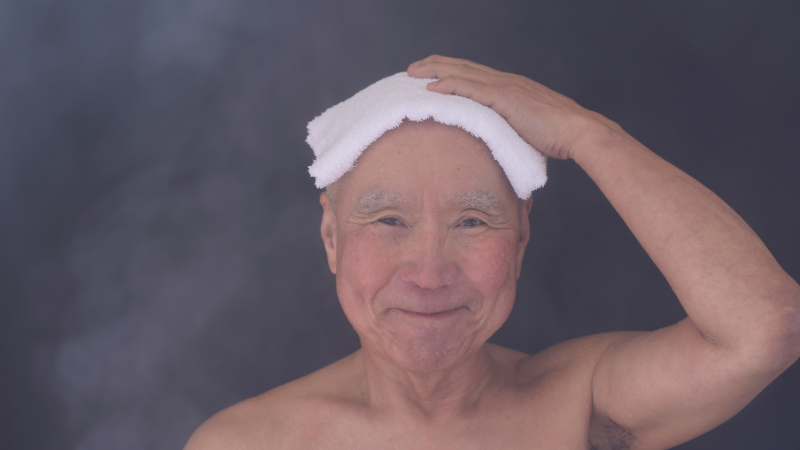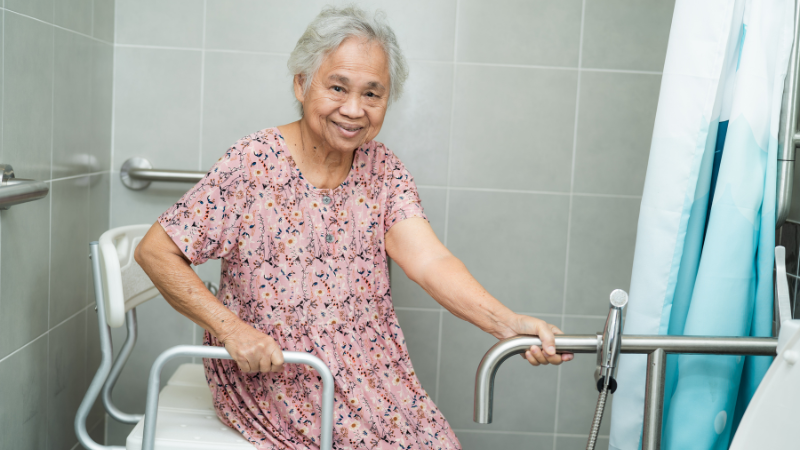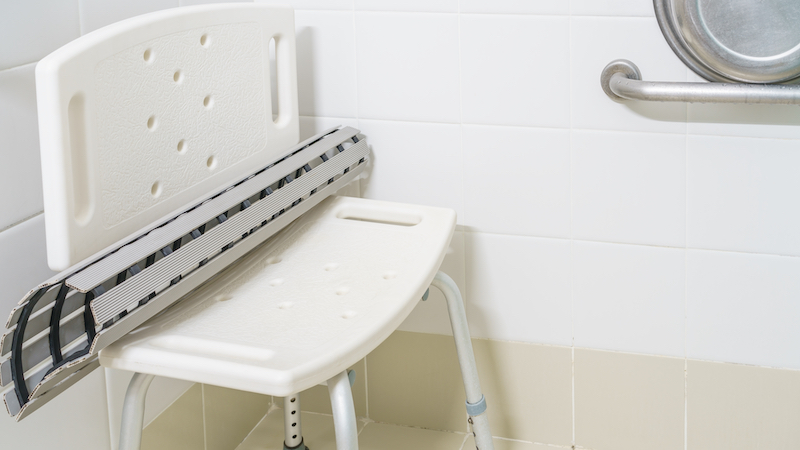As we gracefully navigate the golden years, certain aspects of our daily routines warrant thoughtful consideration and adaptation. Personal hygiene, a cornerstone of well-being, takes on a new significance for older adults. When answering the question of how often should elderly shower there needs to be a delicate balance of showering frequency and the nuances of skin health, mobility challenges, and individual preferences. Join us on a journey to explore the art of finding the perfect balance in showering routines for our seniors, recognizing that the answer lies in a thoughtful blend of practicality, compassion, and an understanding of the unique needs that accompany the aging process.
Key Takeaways:
- Elderly bathing frequency should be determined by individual health conditions and the risk of complications like infections or falls.
- Adapting the bathing routine with safe practices and appropriate products can enhance hygiene without compromising skin health or safety.
- The approach to an elderly person’s care should prioritize comfort, dignity, and independence, catering to their specific health and mobility needs.
Understanding the Basics of Elderly Hygiene
The frequency with which elderly individuals should bathe can depend on a variety of factors, including their overall health, level of physical activity, and any underlying medical conditions. While daily showers might be a norm for younger people, older adults may not need to follow the same routine.
Personal hygiene is crucial to maintaining good health and preventing urinary tract infections, skin infections, and other health issues, but the best way to manage an elderly person’s bathing schedule might differ from that of younger adults. It’s essential to balance the need for cleanliness with the risk of skin breakdown or falls in the bathroom, especially for those with limited mobility or memory loss.
Elderly hygiene is a delicate balance between ensuring good health and accommodating the unique needs of older individuals. Your approach to personal care routines requires a compassionate understanding of these factors.
Video: How Often Should Elderly Shower?
Determining Appropriate Bathing Frequency
The frequency of showers for the elderly can vary based on individual circumstances and health considerations. Daily showers may not be necessary and could lead to dry skin or skin irritation. Generally, elderly individuals should aim to shower at least 2-3 times per week, unless otherwise advised by a healthcare professional based on their specific needs and health conditions.
Bathing frequency should be guided by lifestyle, existing health issues, and personal preference, keeping in mind that some elderly adults could benefit from less frequent full baths to prevent skin breakdown and maintain good health. It’s important to consider these factors:
- Health Conditions: If you have skin conditions or urinary tract infections, you might need to bathe more often.
- Activity Level: If you’re less active or bedridden, an occasional warm washcloth or bed bath may be sufficient.
- Hydration and Skin Care: Elderly skin requires hydration. Use a mild moisturizer after bathing to combat dry skin.
Importance of Regular Hygiene in Aging
Good hygiene is essential for maintaining health benefits in seniors. Showers or baths help to remove dead skin cells, minimize strong body odor, and reduce the risk of skin infections. Older adults may experience skin changes that necessitate a gentler bathing schedule, but skipping personal hygiene can lead to urinary tract infections and other health issues. A regular, yet not overly frequent, bathing process can promote healthy skin and play a part in the overall activities of daily living, contributing to an elderly person’s sense of independence.
Risks of Infrequent Bathing for Seniors
Failing to maintain a consistent bathing schedule can pose various risks for elderly people. Infrequent bathing may lead to the accumulation of bacteria and dirt, particularly in skin folds and the perineal area, which can result in skin breakdown or skin conditions. Moreover, the presence of incontinence briefs or dirt can further irritate the skin, increasing the possibility of infections.
Developing a Sustainable Bathing Routine

In considering a sustainable bathing routine for elderly individuals, it’s essential to balance personal hygiene with skin health and overall safety.
In considering the bathing needs of seniors, it’s important to adapt to their changing needs and abilities. For example, someone who has dementia or severe mobility issues may find it difficult to take a full bath safely. In such cases, sponge baths using warm water and appropriate aids like grab bars, bath seats, or hand-held shower heads might be more suitable. Caregivers should aim for a compassionate approach, ensuring that the bathing process remains as much of a comfortable self-care task as possible.
Adapting a bathing routine for the elderly also requires considering their unique challenges and preferences. For some, warm washcloths or moist wipes may suffice to clean away any strong body odor, especially in the skin folds and perineal area where bacteria can grow. Moreover, adult children or family caregivers should pay attention to making the experience as fear-free as possible, addressing concerns such as a fear of falling or slipping, to maintain the senior’s sense of independence and mental health.
Best Practices for Effective Bathing
Effective bathing supports good personal hygiene while respecting the unique challenges some elderly individuals face. Here are concise tips for a safe and effective bathing routine:
- Avoid Strong Soaps: Use gentle body washes to avoid irritation of delicate skin and skin folds.
- Proper Rinsing: It’s crucial to thoroughly rinse shampoos and soaps to prevent residue which can lead to skin infections.
- Tailored Assistance: Family caregivers may need to provide help. For those with limited mobility or conditions like Alzheimer’s disease, regular assistance ensures safety and promotes good hygiene.
- Alternatives to Bathing: For those with a fear of falling or cognitive decline, sponge baths, moist wipes, or waterless cleansers can be good options.
- Hydration: Following a bath or shower, lock in moisture with lotions or creams to prevent dry skin.
- Consider Mobility: Use a comfortable shower chair and install grab bars to reduce the fear of slipping and to accommodate mobility issues.
Recommended Hair Washing Frequency For Elderly Individuals
Elderly individuals don’t need to wash their hair daily. A good hygiene routine might include rinsing shampoos through the hair once or twice a week, depending on the senior’s skin type and activity level. Less frequent hair washing can help avoid dry skin and maintain natural oil balance, especially since hot water and frequent washing can exacerbate dryness.
Adapting to Changing Needs and Abilities

As elderly individuals experience changes in physical capabilities and cognitive functions, it’s crucial to tailor their personal care routines, including bathing, to their evolving needs to ensure safety and preserve dignity.
Addressing Mobility and Cognitive Challenges
Mobility issues and cognitive decline, such as memory loss experienced by dementia patients, can dramatically affect the capability of senior citizens to maintain personal hygiene. Elderly people may find it increasingly difficult to take full baths safely due to the fear of falling or the inability to keep track of time. It is important for caregivers to assess the bathroom for safety features, such as grab bars and shower chairs, which can provide stability and reduce the risk of slipping. Consider using a hand-held shower head to more easily rinse shampoos and body washes, helping to maintain good hygiene while accommodating limited mobility.
Older adults with cognitive conditions like Alzheimer’s disease or general memory functions decline may benefit from a compassionate approach that involves reminders or assistance during their personal care routines. Strategies might include setting up a consistent bathing schedule or using visual aids to reinforce the steps involved in the bathing process. Balancing the need for a safe environment and the elderly person’s wish for independence can be a delicate task that requires trust and patience from family members and caregivers alike.
Providing Support While Maintaining Independence
Supporting an elderly parent or relative with their daily shower or weekly bath involves not just physical assistance, but also fostering a sense of independence and dignity. Simple changes in the bathing routine or environment can make a significant difference. For instance, warm washcloths or moist wipes can be used for cleaning skin folds and the perineal area to prevent infections like urinary tract infections without requiring a full shower every single day, especially if they have skin conditions like eczema or dry skin. Senior citizens with good health otherwise may not need daily showers, but should still maintain good personal hygiene.
Caregivers can provide options such as bed bath, portable showers, or waterless cleansers for elderly people with severe mobility issues or those who express a strong body odor indicating the need for more frequent bathing. The main reason for adapting the bathing process to the older adult’s specific health conditions and mobility limitations is to maintain their health benefits. Adequate moisturizing post-bath can help prevent skin breakdown and maintain healthy skin.
Trust between the elderly individual and their caregiver ensures a collaborative approach where the caregiver offers a safe and comfortable shower chair and considers the elder’s preferences for how to maintain hygiene, thus catering to different needs and ensuring that the personal care routines are effective and appropriate for their unique challenges.
Choosing the Right Products and Tools
When planning for an elderly person’s bathing routine, selecting the right products and tools is crucial to maintain their skin health and ensure safety.
Selecting Gentle Cleansing Products
It’s vital to choose soaps and body washes that are gentle on the skin to prevent dryness and irritation. Fragrance-free options can reduce the risk of allergic reactions and are better suited for sensitive skin. For elderly people, hydrating ingredients in cleansers can help maintain healthy skin. Moisturizers and lotions should be applied immediately after bathing with warm water to lock in moisture and manage dry skin issues. Look for products that mention “non-drying” or contain oils and emollients, as these can be beneficial in preventing itchy skin and skin infections.
Recommended Cleansing Products:
- Soaps: Use mild, fragrance-free soap to avoid skin irritation.
- Shampoos: Gentle, hydrating shampoos can help maintain the scalp’s moisture balance.
- Moist Wipes: These are helpful for quick cleanups, especially for those with limited mobility.
- Waterless Cleansers: Dry shampoos and bathing wipes are great alternatives for days between full baths.
Assistive Devices for Safer Bath Time

Bathtime safety is essential, particularly for those with mobility issues or conditions like dementia. Install grab bars near the shower, toilet, and bath area to reduce the fear of falling. For a safer and more comfortable experience, use a shower chair or bath seat, and ensure a handheld shower head is available to make rinsing easier. Family caregivers should consider the installation of bidets or portable showers as these can enhance an elderly person’s sense of independence while managing bathing needs.
Essential Bathing Tools:
- Grab Bars: Install in strategic locations for support.
- Handheld Shower: Facilitates bathing without the need to stand.
- Shower Chair: Provides a stable and comfortable shower chair for those who cannot stand for long periods.
- Non-slip Mats: Prevent slips by placing these in and out of the shower area.
In determining how often the elderly should shower, it’s essential to consider the unique circumstances of each individual. Striking the right balance involves understanding skin health, addressing mobility challenges, and considering any underlying medical conditions. By tailoring hygiene practices to the specific needs of the elderly, caregivers can contribute to their overall well-being and maintain dignity and comfort in their daily lives.







